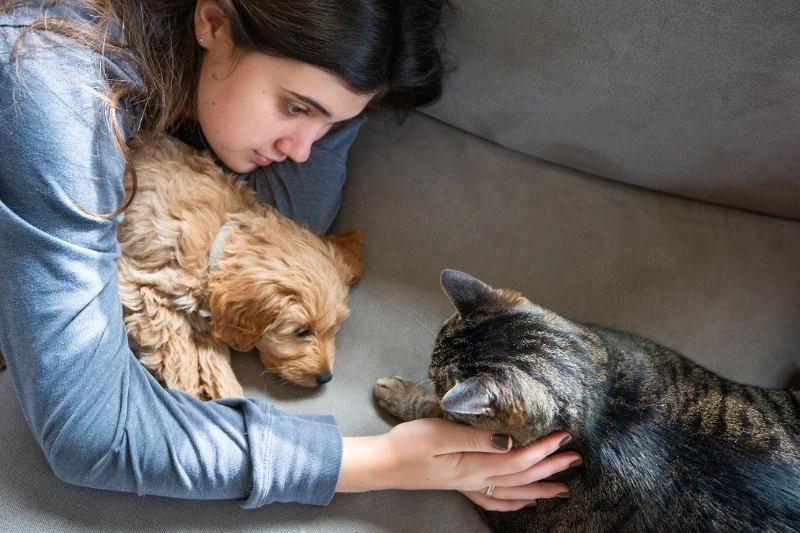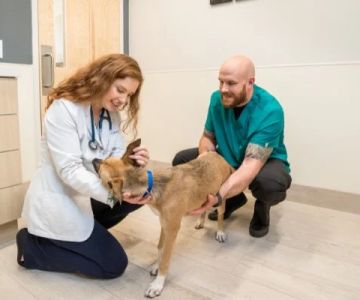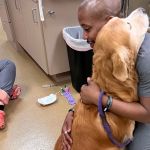
- Why Pet Introductions Are Important
- Preparing Your Home for the New Pet
- Steps to Introduce a New Puppy or Kitten
- Common Challenges and How to Handle Them
- Real-Life Case Study: Pet Introduction in Action
Why Pet Introductions Are Important
Introducing a new puppy or kitten to existing pets can be a delicate process, but it’s crucial for ensuring that all your animals live harmoniously. Whether you’re bringing in a playful puppy or a curious kitten, the way you introduce your new pet can have a lasting impact on the dynamics of your household. A smooth introduction helps prevent territorial issues, reduces stress, and ensures that both your new and existing pets feel comfortable and secure in their shared space.
Understanding how to properly introduce pets to one another can set the foundation for positive relationships. A chaotic or rushed introduction may lead to behavioral issues, such as aggression or anxiety, which could persist throughout their time together. Taking the time to manage the introduction process carefully will give all your pets the best chance for a successful relationship.
Preparing Your Home for the New Pet
Before you bring a new puppy or kitten into your home, it's essential to prepare both your environment and your existing pets for the changes. Here are some key steps to ensure a smooth transition:
- Separate Spaces: When you first bring your new pet home, it's best to create a separate space for them. This gives both the new pet and your existing pets time to adjust to each other’s scent and presence without direct interaction. Use baby gates or closed doors to create a safe and calm area for your new pet.
- Establish Familiarity: For the first few days, allow your pets to get used to each other’s scent. You can swap bedding or toys between your pets to help them become familiar with each other’s scent before direct contact occurs.
- Prepare for Potential Behavior Changes: Understand that your existing pets may exhibit changes in behavior, such as increased territoriality or jealousy. Prepare to give them plenty of attention and reassurance during the adjustment period to prevent anxiety or stress.
Steps to Introduce a New Puppy or Kitten
Once your home is prepared, it’s time to introduce your new pet to your existing ones. Here’s a step-by-step guide for making the introduction as smooth as possible:
1. Gradual Introduction
Start by allowing your existing pets to observe the new puppy or kitten from a distance. Keep the new pet in their separate space, and allow the existing pets to approach the door or gate to sniff and become accustomed to the new scent. This gradual introduction helps reduce initial tension or anxiety.
2. Controlled Face-to-Face Meeting
After a few days of scent introduction, it’s time for the first face-to-face meeting. Keep the new puppy or kitten on a leash or in a carrier to control their movements. Let your existing pets approach slowly, ensuring that everyone remains calm. Keep the interaction short and positive, rewarding good behavior with treats and praise. Monitor their body language closely to prevent any aggressive or fearful reactions.
3. Short Sessions, Frequent Interactions
In the first few meetings, keep the interactions short but frequent. Gradually increase the time they spend together as they become more comfortable. Continue to supervise all interactions to ensure safety and prevent any negative experiences from occurring.
4. Monitor Progress Over Time
It may take time for your pets to adjust to each other. Keep track of their progress and watch for signs of stress, aggression, or discomfort. If necessary, give them more time apart or slow down the introduction process until they’re ready for more interaction.
Common Challenges and How to Handle Them
Introducing a new pet is often not a smooth process, and you may encounter some challenges along the way. Here are some common issues and how to address them:
1. Aggression or Hissing
It’s common for pets to react with aggression or hissing, especially if they feel their territory is being threatened. If this happens, don’t force the interaction. Instead, give both pets space and try reintroducing them after a few hours. You can also consider using pheromone sprays or diffusers to help calm their nerves.
2. Jealousy or Attention-Seeking Behavior
Existing pets may feel neglected or jealous when a new puppy or kitten enters the picture. Ensure that your current pets continue to receive individual attention, playtime, and affection. This helps alleviate any feelings of competition or insecurity.
3. Anxiety or Stress
Both new pets and existing pets may experience anxiety during the introduction process. Keep the environment calm and consistent, with plenty of opportunities for each pet to retreat to a safe space. Try to maintain their regular routine as much as possible, and consider using calming products like anxiety wraps or calming treats.
Real-Life Case Study: Pet Introduction in Action
Take the case of Jessica, who recently brought a puppy named Max into her home, where her 4-year-old cat, Bella, was already living. At first, Bella was wary of the new puppy, and Max was overly excited, which led to some tense moments. Jessica carefully followed the steps outlined above, ensuring that Bella and Max had plenty of space and scent introduction time. After a few weeks of gradual interaction, they began to tolerate each other, and Bella even started to play with Max. Today, they share a harmonious space, with Bella keeping her distance when she needs to and Max respecting her space when it’s time for rest.
This case shows how patience and careful planning can lead to a positive outcome when introducing new pets. Jessica’s success was a result of taking it slow and ensuring that both Bella and Max felt safe and secure throughout the process.









 Royer Veterinary Services4.0 (1203 reviews)
Royer Veterinary Services4.0 (1203 reviews) Durango Equine Veterinary Clinic4.0 (112 reviews)
Durango Equine Veterinary Clinic4.0 (112 reviews) Carefree Dentistry and Oral Surgery for Animals4.0 (114 reviews)
Carefree Dentistry and Oral Surgery for Animals4.0 (114 reviews) Encanto Mobile Veterinary Services3.0 (11 reviews)
Encanto Mobile Veterinary Services3.0 (11 reviews) Advent Veterinary Services (Dr. Vivian Ramos - Dr. Thomas Kilbane)4.0 (336 reviews)
Advent Veterinary Services (Dr. Vivian Ramos - Dr. Thomas Kilbane)4.0 (336 reviews) CARE Animal Surgery Center4.0 (129 reviews)
CARE Animal Surgery Center4.0 (129 reviews) How to Build Confidence in a Shy Pet
How to Build Confidence in a Shy Pet How to Find the Right Specialist Vet (Cardio, Ortho, Neuro)
How to Find the Right Specialist Vet (Cardio, Ortho, Neuro) The Effect of Seasonal Allergies on Pets & How to Help
The Effect of Seasonal Allergies on Pets & How to Help How to Build a Pet Emergency Kit: Essentials You Need
How to Build a Pet Emergency Kit: Essentials You Need Coping with Pet Separation During Long Vacations: Tips & Solutions
Coping with Pet Separation During Long Vacations: Tips & Solutions How to Transition a Senior Pet to Easier-to-Eat Food: A Comprehensive Guide
How to Transition a Senior Pet to Easier-to-Eat Food: A Comprehensive Guide